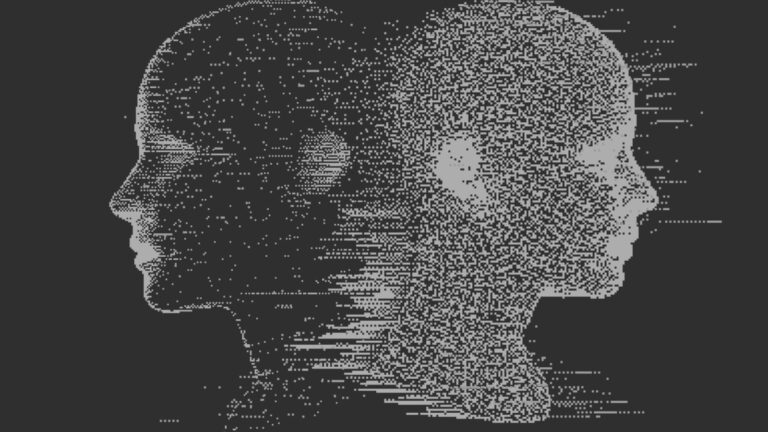
Source: news.google.com
Express your own identity it has always been a basic human desire. As human beings, belonging to a community is intertwined with our need for survival as a species. In ancient times, being part of a larger group of humans was essential to avoid being eaten by wild predators. While the chances of that happening today are pretty slim, we never lost that vestigial survival instinct. We still don’t want to be marginalized or rejected; we want to be part of the tribe, and shared identity continues to be a driving force in doing so.
As technology continues to evolve, so does the way we build and express our identities online. For the last decade or so, Millennials and older generations have made it in a Web2 world. But as we move into the decentralized world of Web3, the way we build our online identities could become less about having an identity for each unique platform and much more about consistency, transparency, and ownership.
Drawing on my experience running a mobile publishing and technology company creating digital experiences, I’d like to share why business leaders and entrepreneurs in the space should be thinking about the role identity plays in Web3.
Identity in a Web2 world
Thanks to America’s sweetheart Dolly Parton, a hilarious four-panel meme spread like wildfire in 2020, lighting up all of our social media for weeks until tiger king arrived. The meme featured four different photos, which were very different depending on the social media platform.
But what was at the heart of this meme? Is it true that we really have a different identity on each platform we use? The short answer is yes. On Web2, at least.
The reason for this is twofold. On a superficial level, it has to do with the fact that each platform has its own purpose, and as such, we shape our identity to fulfill it. Obviously, on Tinder, one’s identity will be dating-focused, while on Linkedin it will be much more career-focused.
But digging deeper, it actually has a lot more to do with the fact that what you build in Web2 stays in the ecosystem you built it in. The technology behind Web2 does not provide the ability to transfer, display or share your identity across different platforms. So if you build your identity on Roblox, you won’t be able to transfer your identity to another ecosystem, as it is fully owned and lives in that closed system.
The Rolling Stone Culture Council is an invite-only community for influential, innovative and creative people. Do I qualify?
What Generation Z values most about identity
Gen Z values digital communication. According to Snap Inc.’s “The Snapchat Generation” report released in 2022, today “visual messaging is a much more personal and expressive form of communication.” Because everything is shown to users in the conversation, even when pictures are saved, Snapchat offers transparency, something more than Gen Z values. TikTok also has similarities in that it is a platform to promote genuine entertainment rather than just looking good. (Full disclosure: The author’s company is an official partner of TikTok’s Creative Exchange and is one of TikTok’s creator networks.)
What Gen Z also values highly is their ability to provide the most genuine form of non-face-to-face communication. This is because both callers are always aware of each other’s intentions based on a number of factors, including receiving notifications when the other person is typing or if they capture or save a screenshot of their conversation, which which makes it the closest thing to an in-person conversation. communication as technologically possible.
Finally, the concept of community is important to Generation Z. Members of Generation Z take advantage of their digital identity to show which groups they belong to. While teens have always wanted to “have their own,” it seems vanity has taken a backseat with Gen Z and authenticity has taken the driver’s seat.
Web3 and Authentic Identity
For the last decade or more, much of social media has relied on vanity as the primary builder of one’s identity. With the data, mainly views and likes, monetized on Web2, platforms could earn money by activating user validation wishes. In doing so, many users have learned to tailor their online identities simply to generate more followers and engagement, making it highly unlikely that their followers will actually get to know the real person behind the profile.
What is so exciting and transformative about Web3 is that it could allow us to build and showcase our truer identity at any given time because the data that surrounds us is not owned by anyone. Right now, however, if you create your identity on Web2, your data is collected by the entity that is also monetizing it. When you’re fully decentralized on Web3, that’s probably not a concern anymore.
When you think about the concept of PFP (Picture As Proof), many Gen Zers don’t even wear an avatar that is a picture of themselves. Instead, many display avatars that they believe more accurately show how they view themselves internally without stigma or social constraints.
As we enter a multi-chain state, I predict, like many in the space, that we will be able to take our PFPs across platforms. And whether this means you see yourself as a pink-haired mermaid or a 9-foot-tall lumberjack, you have the ability to establish that identity, display it, and share it on every platform because it belongs to you.
In Web3, identity is set up to focus on ownership and authenticity, making your identity a much truer reflection due to the level of transparency around the ownership component, and also your ability to decide to show who you are you for what you own.
Read More at news.google.com